Life On The River: Rowing Through Vietnam’s Mekong Delta

Vietnam’s Mekong Delta is not just a body of water stretching 4,350 kilometers. It’s the primary source of life for many residents in southern Vietnam. Compared to the relentless fast pace of Ho Chi Minh City, life on the water slows down with a refreshing gentle sway.
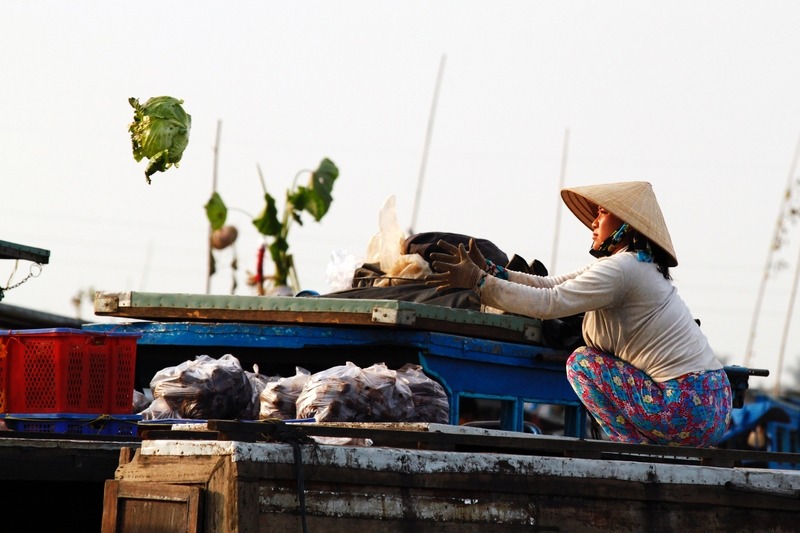
Photo Credit: Hamzy Selamat
If you’re a traveler looking for a stimulating day trip from Ho Chi Minh City, a visit to the Mekong Delta can’t be missed. Think Ben Thanh Market, but on the water.
Contents
Vietnam’s Mekong Delta: A life of rowing and floating
On your day trip to Vietnam’s Mekong Delta the Cai Be Floating Market MUST be your first stop. For an enhanced glimpse into local life, we advise arriving to the market no later than 5 AM. The Vietnamese start their days early. In fact, Cai Be Market’s peak hours begin as early as 3 AM.
For an unadulterated experience you must “do as the locals do”. That requires waking up at the crack of dawn before the market emtpies out.
Cai Be Market is broken into two sections. One are is for consumers and the other for distrubuters. On average, 400 – 500 boats per day drift about selling fruits, vegetables, and a wide range of other products.
Notice how vendors place items for sale on long poles which hang high above their boats. This is a simple, yet highly-effective way to advertise a product on Cai Be Floating Market.
Due to its demanding hours, many tradespeople’s boats double as their private home. For residents of Vietnam’s Mekong Delta, life on the river is a way of life not often seen elsewhere.
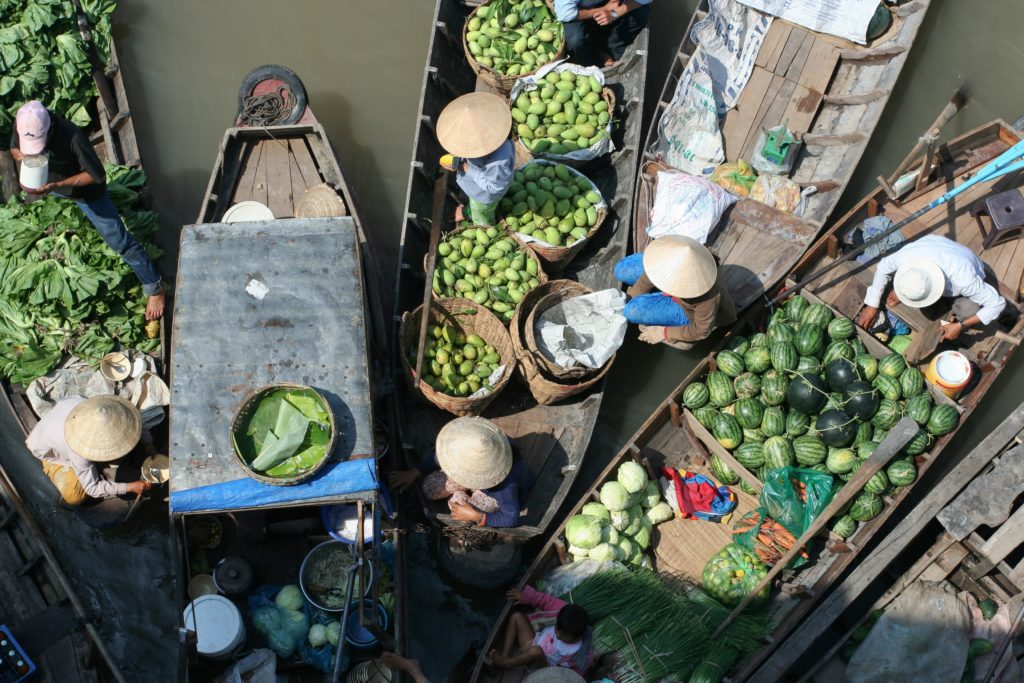
Photo Credit: Jarous
After visiting the floating market, swing by the picturesque Cai Be Catholic Cathedral resting along the riverbanks. Be sure to glide past the church to capture that eviable “Insta Worthy” post.
If your itinerary includes a visit to neighboring Can Tho, ask your “captain” to stop-off at one of the nearby islands for a quick excursion.
Rowing the sampan: Deeper into the jungle we go…
The next part of your journey should traverse the estuaries leading deeper into the dense tropical jungle. For most, tralevers hop into a local “sampan” at this point. A sampan is a Chinese wooden boat with a flat bottom. In the Mekong many sampans are shockingly rowed by the legs rather than the arms.
Exploring the murky waterways of the Mekong Delta via sampan is both intimidatig and intriging. For many, thoughts of all the creatures swimming beneath is hard to escape, which adds to the excitment of the Mekong Delta adventure.
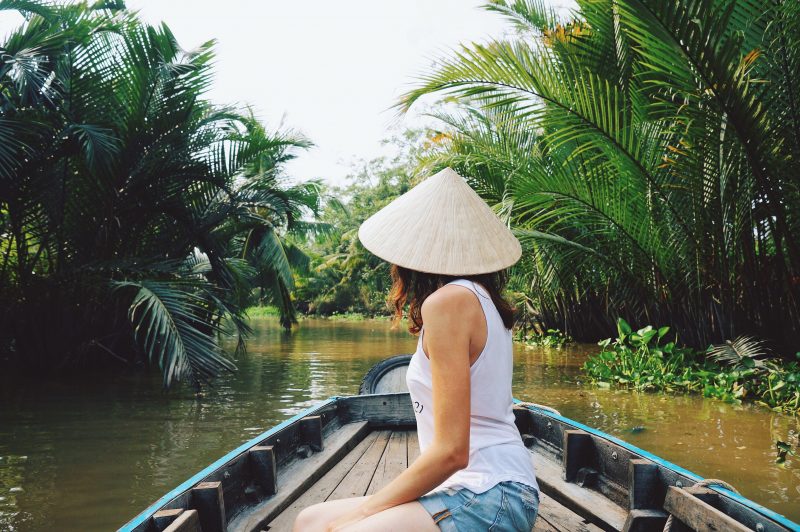
Photo Credit: Bucha Natallia
Along the way you’ll encounter friendly local farmers tending to tropical fruit farms. Residents of the Mekong truly enjoy engaging in face-to-face interaction with travlers. Rather than feeling like an intruder on private property, the hospitable culture greets guests with big smiles, waving, and children running out of the foliage to shout “hello” from the river banks.
On the way back to civilization, make an additional stop at Tan Phong Island, the hometown of the popular Southeast Asian fruit called Rambutan.
Cao Dai Temple: Peering into the “Divine Eye”
The practice of Cao Dai is perhaps the most amalgamated religion in the world taking philosophical ideologies from Taoism, Buddhism, Confucianism, Christianity, and even Islam. The religion is indigenous to southern Vietnam, most prominently in the Mekong Delta region. With an estimated three million followers, there are more Cao Dai temples in the Mekong than anywhere else in the world.
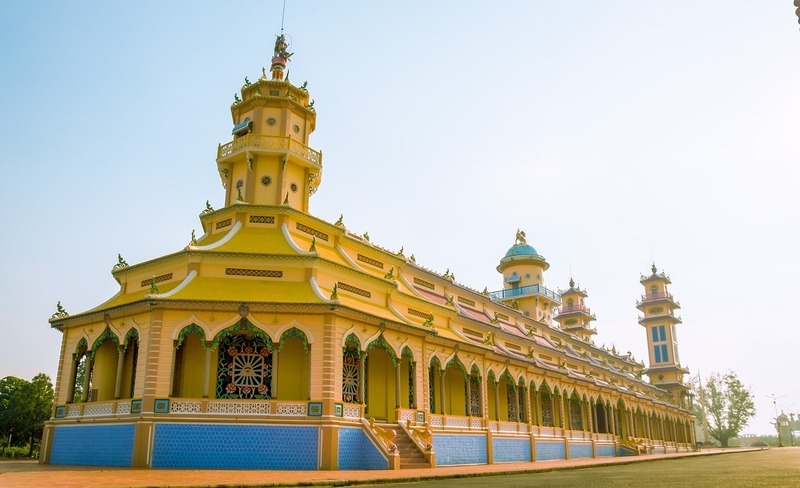
The religion was founded in the 1920s and the structural design of the temples also borrow upon architectural concepts from the aforementioned religions. Cao Dai temples are part pagoda, part cathedral, and part mosque.
Practitioners worship what is referred to as the “All-Seeing Holy Eye”. This is a physical representation of their God. Evidence of this can be seen in artwork above the entrance to the “Divine Temple” pictured above. Standing at nine-stories, this place of worship is located 60 miles northwest of Ho Chi Minh City near Tay Ninh province.
Other nearby attractions
The channels of the Mekong Delta sprawl over 40,500 square kilometres and span 12 provinces. With this much space to cover there is no shortage of sites to see.
Can Tho City
Can Tho has seen a significant increase in popularity over the years. Today, the Ninh Kieu waterfront is a port hub. Since most boat tours through the Mekong begin and end here, Can Tho City is often referred to as the “Gateway to the Mekong”.
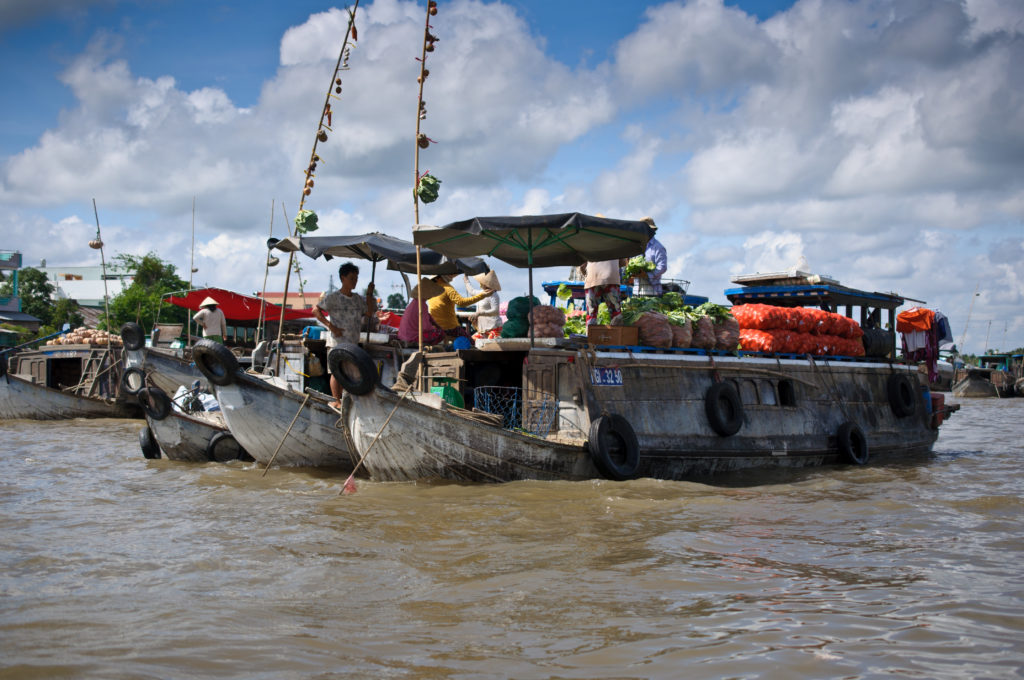
Photo Credit: filmlandscape
By night, the waterfront transforms from a humble port city into a booming party scene by night. The riverside bars, hotels, and floating restaurants attract visitors as the flickering neon lights paint the waters with an array of colors.
Tram Chim National Park
Tram Chim National Park is located in the Dong Thap province. It’s home to over 200 kinds of birds, many of which are endangered species. Additionally, the national park is home to over 1/4 of all birds in Vietnam.
Today, the park is nicknamed the “Kingdom of Birds” and encompasses over 7,500 hectares of land. Be sure to plan your trip during March and April for the best weather conditions.
Two Insider Tips
As always, we close with a few tips to make your excursion just a little bit easier. From transportation tips, where to go, and what to-do and not-to-do, we got you covered.
So, next time you visit Vietnam’s Mekong Delta, make sure to pay attention to these two insider tips.
#1. Dress properly when visiting religious sites
Being a good tourist means respecting local culture and religious traditions. Dress codes are commonly enforced at most temples across the region. However, the rules do vary depending on the site. In the Mekong, simply make sure your knees and shoulders are covered upon entering. Women should wear pants, long shorts, or wrap their legs and upper body with a sarong. The same goes for men.
#2. Do not visit during rainy season
Southern Vietnam has two seasons: hot and rainy. If travelers make the mistake of visiting Vietnam’s Mekong Delta during rainy season expect flooding, inaccessible sites, power outages, and a long list of interruptions that will certainly interfere with travel plans during this time.
In the southern region, the dry season begins in November and comes to a close around January. Be aware the central and northern regions have their own seasons, so research and plan accordingly.